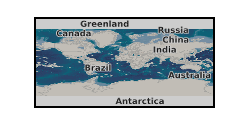DAT files
Type of resources
Topics
Keywords
Contact for the resource
Provided by
Years
Formats
Update frequencies
-

This dataset contains numerical model output of a morphodynamic and sedimentological simulation of a large river confluence based loosely on the Jamuna-Ganges junction in Bangladesh. The work was carried out as part of a joint project between the Universities of Birmingham, Southampton and Exeter. "The sedimentology of fluvial megascours" was a scientific research project funded by NERC. One aspect of the project was to undertake numerical simulations (the data described here) with which to compare with river bed bathymetry data (collected using a multibeam echosounder) and sub bottom seismic profiling data (collected using a surface tow boomer and chirp system). The data has been accepted for a publication in the journal 'Sedimentology' which will be published in 2018 with the title 'The Sedimentology of channel confluences'.
-

Element maps from 5x 10 cm sections generated using the Zeiss Sigma HD Field Emission Gun Analytical SEM at Cardiff University. Maps come from sections within the early Miocene pelagic interval situated directly below the Nicobar Fan succession at IODP Site U1480 in the Eastern Equatorial Indian Ocean (for more information see published report, https://doi.org/10.1016/j.epsl.2017.07.019). These specific sections were chosen to examine the depositional environments associated with transitions from red clays to white chalk, which demonstrate distinct banding at the micro and macro scale.
-

This data comprises various transmitted and reflected light microscopy images, scanning electron imagery, chemical mapping (energy dispersive X-ray spectroscopy), and crystallographic mapping (electron backscatter diffraction) of basalt samples. Basalt cores were taken from the Reykjanes Ridge in the North Atlantic Ocean, during IODP Expedition 395C at four sites, U1554, U1555, U1562, and U1563.
 NERC Data Catalogue Service
NERC Data Catalogue Service